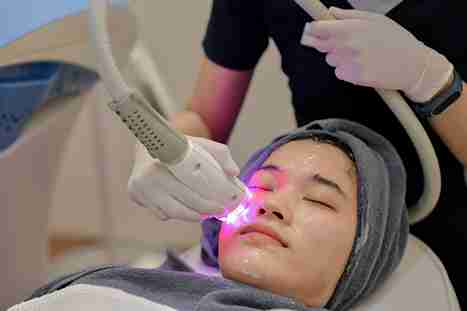No More Mistakes with Flour Mill Machine Manufacturer
Mar 11 2023

Laser hair treatment has become a popular way to deal with unwanted hair, especially for those tired of shaving, waxing or tweezing. But what actually happens under your skin during the process? It’s not just about zapping away hair it involves clever technology and the body’s natural response. If you’ve ever wondered what’s going on at a deeper level, this guide will walk you through the science behind the smooth skin you see afterward without being too technical or complicated.
At its core, laser hair treatment works by targeting melanin, the pigment that gives your hair its colour. A concentrated beam of light is directed at the hair follicle. This light is absorbed by the melanin and converted into heat, which damages the follicle to prevent or slow future hair growth.
This process is known as selective photothermolysis. The laser selectively heats the dark matter (melanin) without affecting the surrounding skin. It’s precise and efficient when done correctly, especially on darker hair and lighter skin tones.
The process only works effectively during the anagen (growth) phase of the hair cycle, which is why multiple sessions are required. Only about 20–30% of hairs are in the right phase at any given time.
Results may vary depending on individual hair growth cycles and skin types; multiple sessions are typically necessary for optimal outcomes.
Hair doesn’t grow all at once; it cycles through different stages. Here’s a quick overview:
|
Hair Cycle Stage |
What Happens |
Can Laser Treat It? |
|
Anagen |
Active growth phase |
Yes, most effective |
|
Catagen |
Transitional phase |
No, limited effect |
|
Telogen |
Resting/shedding phase |
No, follicle is inactive |
This is why your technician will schedule your sessions 4–6 weeks apart to catch new hairs entering the anagen phase. Most people need 6–8 treatments for optimal results.
After a session, your skin may look slightly red or feel warm similar to mild sunburn. This is completely normal. What’s happening is:
Over the following week or two, the treated hairs begin to shed. It may look like they’re growing at first, but they’re actually being pushed out by the skin. You can gently exfoliate to help this process along, but avoid aggressive scrubbing or harsh products.
During this time, new hair may appear. This is likely from follicles that weren’t in the active growth phase at the time of your session.
The ideal combination for laser hair treatment is light skin and dark, coarse hair. The contrast makes it easier for the laser to target the pigment in the hair without affecting the skin.
Those with darker skin tones can still have excellent results but may require different laser types (like Nd:YAG), which bypass the skin's surface more safely. Fine or light-coloured hair (blonde, red, grey) can be trickier, as there’s less pigment for the laser to latch onto. That’s where a consultation really matters.
Some parts of the body respond quicker to treatment than others. For instance:
If you’re worried about pain it’s not unbearable. Most people describe it as a snapping rubber band or slight warmth. Many machines now include cooling systems to protect the skin and reduce discomfort. Similar to how a private dentist in Ipswich invests in patient comfort and precision tools, modern laser clinics also use the latest devices to ensure safety and minimal discomfort during each session
Sessions can range from 10 minutes (underarms) to an hour (full legs).
Laser treatment is a gradual process. You’ll likely see a noticeable reduction after a couple of sessions, but the full impact takes time. The treated hairs will get finer, lighter, and grow back slower if at all.Maintenance sessions may be needed every 6–12 months, especially for areas affected by hormones like the face or bikini line.
When you stick to the treatment schedule, the benefits build up. You’ll enjoy:
It’s actually a permanent hair reduction. Some follicles may regrow, but most stay inactive after treatment.
Laser treatment doesn’t work well on grey, white, or light blonde hair because these hairs lack enough pigment to absorb the laser energy.
Men are increasingly choosing laser hair removal in Ipswich for areas like the back, chest, and beard line shaping.
In fact, it’s better to shave before your treatment. Growing hair out can reduce the effectiveness of the laser.
Here’s something many people don’t realise certain laser hair systems can stimulate collagen production in the skin. While that’s not their main purpose, the gentle heat can lead to smoother texture and improved tone in the treated area.
It’s a subtle but welcome side-effect that many clients notice after several sessions especially on areas like the face and neck.
At EDI, we believe laser hair treatment is more than just removing unwanted hair, it's about feeling confident in your skin, from the surface to what’s happening underneath. Our team is trained in delivering safe, effective care using advanced equipment and techniques.Whether you’re after smoother skin or long-lasting results with ease, we’re here to make it simple. Let us handle the science so you can enjoy hair-free skin with comfort, care, and confidence every day.
Social Media Marketing Strategies for Beginners
Mar 14 2023
(0) Comments